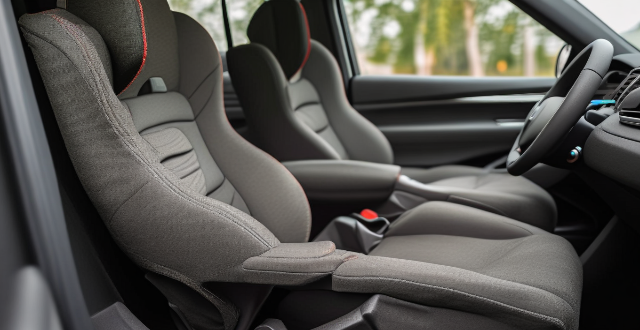This comprehensive guide outlines the steps for installing both rear-facing infant and forward-facing child car seats, emphasizing the importance of following the seat manual, vehicle compatibility, and correct harness adjustment. It also provides tips for safe use, such as checking for less than one inch of movement in the installed seat, avoiding bulky clothing under the harness, and being aware of expiration dates. Regular check-ups by certified technicians are recommended to ensure continued safety.

How to Install a Baby Car Seat Correctly
Important Notes Before You Start
- Read the Manual: Always refer to your car seat manual for specific instructions.
- Vehicle Compatibility: Ensure your vehicle is compatible with the car seat you choose.
- FAA Approval: If flying, use a car seat that meets FAA approval.
Steps to Install a Rear-Facing Infant Car Seat
1. Choose the Right Seat
- Select a rear-facing infant car seat suitable for your child's age and size.
2. Preparing the Seat
- Remove the car seat from its packaging.
- Check for any damage or missing parts.
3. Remove Existing Seats (if necessary)
- Clear out space in your vehicle's back seat area.
4. Install the Base
- Position the Base: Place the base on the vehicle seat ensuring it's flat and level.
- Tighten the Belt: Route the vehicle's seat belt or LATCH system through the base as per manual and tighten.
- Lock the Base: Make sure the base has locked into position using the lock-off or indicator on the base.
5. Attach the Car Seat to the Base
- Align the car seat with the base.
- Push down firmly until you hear a click or see an indicator show it's securely attached.
6. Adjust the Harness
- Harness Height: Adjust the height of the harness to fit your baby properly.
- Harness Tightness: Tighten the harness so it's snug on your baby with no slack.
7. Place Your Child in the Seat
- Recline Angle: The seat should be at a 45-degree angle or as recommended by the manufacturer.
- Buckle your child in and adjust the harness as needed.
8. Final Checks
- Ensure there is no more than one inch of movement side-to-side or front-to-back when grabbing the base at the belt path.
- Double-check all buckles, straps, and adjustments.
Steps to Install a Forward-Facing Child Car Seat
1. Choose the Right Seat
- Select a forward-facing car seat appropriate for your child's weight and height.
2. Preparing the Seat
- Follow steps similar to the rear-facing seat preparation.
3. Belt Integration or LATCH System
- Decide whether to use the vehicle seat belt or LATCH system to secure the seat.
4. Installing the Seat
- Seat Orientation: Make sure the seat is correctly oriented for forward-facing.
- Belt/LATCH Routing: Follow the manual for proper belt or LATCH routing.
- Tightening: Ensure the seat is tightly secured with minimal movement.
5. Harness and Headrest Adjustment
- Adjust the harness and headrest based on your child's size.
6. Placing Your Child
- Use the harness clip at armpit level and tighten the harness, removing any slack.
7. Verification
- Verify that the seat is stable and cannot be moved more than one inch in any direction.
Tips for Safe Car Seat Use
- Movement Check: Less than one inch of movement is allowed at the belt path.
- No Clothing Under Harness: Avoid bulky clothing; straps should be snug on the child.
- Expiration Dates: Be aware of expiration dates on car seats and replace if expired.
- Regular Check-ups: Have your car seat installation checked by a certified technician periodically.
By following these steps carefully and referring often to your car seat manual, you can ensure your child's safety while traveling in the car. Remember, proper installation is crucial for effective protection.